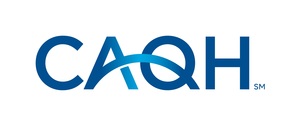WASHINGTON, June 14, 2018 /PRNewswire-USNewswire/ -- The U.S. healthcare industry made a modest amount of progress in automating claims-related business processes, but a significant opportunity to save $11.1 billion annually remains, according to new data released today in the fifth annual CAQH Index®. The report shows increased use of some manual transactions – primarily via web portals – resulting in a reversal of gains made for some of those transactions in previous years and the increase in potential savings.
The CAQH Index is the industry source for tracking health plan and healthcare provider adoption of electronic administrative transactions for both medical and dental care. It calculates the industry, health plan and provider cost savings opportunity and reports the time required for providers to complete common administrative transactions. These include verifying a patient's insurance coverage, sending and receiving payments, inquiring about the status of a claim and obtaining prior authorization for care. Medical and dental plans covering about half of commercially insured lives contributed data and insights for the report, as did a number of providers.
The $11.1 billion industry savings opportunity is an increase of $1.8 billion over the prior year. This is the second year in a row in which the Index has found an increase in the potential industry savings that could be achieved with full adoption of electronic transactions. The largest portion of the savings, $9.5 billion, would accrue to healthcare providers, including an estimated $2 billion for dental providers.
Some of the increase in potential savings is due to a rise in online portal use, which drove a 55 percent overall increase in the volume of manual transactions by providers as compared to the prior year. Transactions through web portals are considered fully electronic for health plans, but manual for providers. At the same time, adoption of fully electronic transactions grew only slightly or declined for most of the transactions affected by portal use. For prior authorizations, a substantial increase in portal use was matched by a decline in adoption of fully electronic transactions.
Adoption of fully electronic transactions did rise for most of the seven medical and five dental transactions benchmarked in the report, but for all but two – coordination of benefits and claim status inquiry in the medical sector – the increases in adoption were only three percentage points or less. Among medical plans and providers, adoption levels of fully electronic transactions actually declined for claim payment and prior authorization, as did eligibility and benefit verification and claim status inquiry transactions by dental plans and providers.
In the dental industry, adoption levels of electronic transactions remained flat and continue to lag behind the medical sector for all of the transactions tracked for both sectors. Claim status inquiry, payment and remittance advice for dental plans and providers all had lower levels of fully electronic adoption than medical, with a 43 to 52 percentage-point difference. Even for claim submission, the electronic transaction with the highest level of adoption by both sectors, fully electronic adoption by dental showed a 20 percentage-point gap compared to medical.
Beyond adoption levels, the Index estimates the cost and time associated with conducting administrative transactions. On average, each manual transaction costs the industry $4.40 more than each electronic transaction and requires five more minutes of provider time.
"Understanding the industry cost of phone inquiries and paper/fax submissions reveals whether or not we are in line with the collective average," said Tab Harris, Senior Director, Provider Connectivity Solutions/EDI Operations, Florida Blue. "Knowledge of the electronic cost validates our vendor expense, and understanding the provider's cost presents an opportunity to promote and facilitate self-service e-capabilities."
Use of electronic transactions for a single medical claim requiring all seven business transactions benchmarked by the Index could save a provider practice almost 40 minutes on average – plus more than $15 in direct cost savings. Similar use for a single dental claim requiring all five benchmarked transactions could save a dental practice nearly 30 minutes on average and nearly $11.75.
Even though the time and cost savings are substantial, provider practices have been slow to adopt electronic transactions. One of the barriers that sometimes prevents providers from benefitting equally from this transition is the need to make an investment in practice technology that supports all business transactions.
"We've seen tremendous cost and time savings from our investment in technology," said Jody Meza, Practice Administrator, Alpine Medical Group, LLC. "We feel it's important to do everything we can to deliver care as efficiently as possible for our patients, and automation of our administrative transactions is one way that we deliver on that goal."
In an effort to more fully appreciate the options available to healthcare providers, the Index contains a supplement that reviews product and service offerings and fee structures of practice management system vendors and clearinghouses. The research concluded that few vendors support all of the most essential electronic administrative transactions. For instance, electronic prior authorization was supported by only 12 percent of the vendor products and services examined. The supplement also describes the complex vendor fee structures encountered by healthcare providers.
In its Call to Action, the Index concludes that the relatively slow, incremental progress reported in recent years of the transition from manual to electronic administrative transactions is no longer sufficient. It proposes that industry participants strongly support provider access to robust electronic data interchange systems and expand the understanding for reasons behind increasing portal use, and urges all stakeholders to embrace the transition to fully electronic transactions.
Download the latest CAQH Index at www.caqhindex.org.
About CAQH
CAQH, a non-profit alliance, is the leader in creating shared initiatives to streamline the business of healthcare. Through collaboration and innovation, CAQH accelerates the transformation of business processes, delivering value to providers, patients and health plans. Visit www.caqh.org and follow us on Twitter: @caqh.
SOURCE CAQH
Related Links
WANT YOUR COMPANY'S NEWS FEATURED ON PRNEWSWIRE.COM?
Newsrooms &
Influencers
Digital Media
Outlets
Journalists
Opted In






Share this article